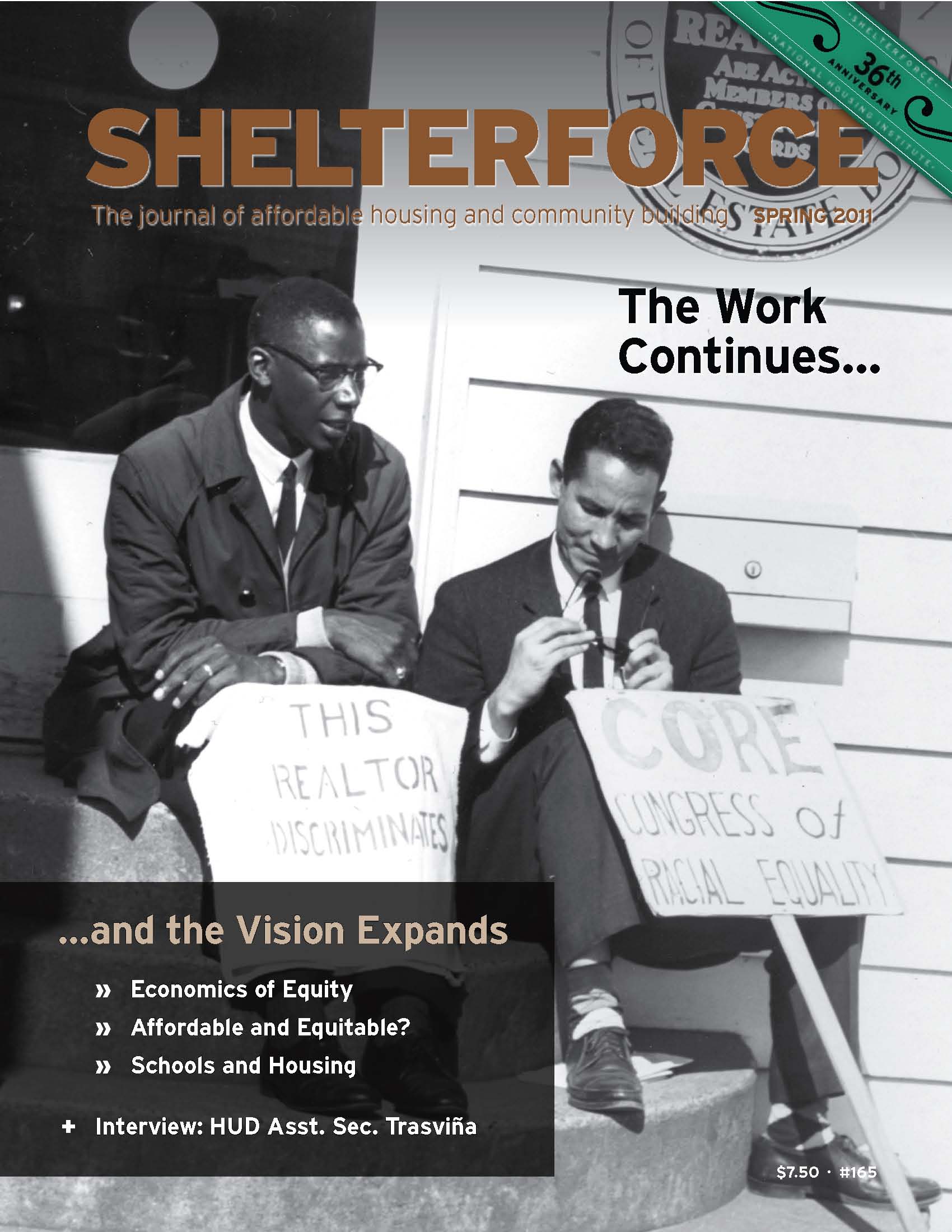Fair Housing: The Work Continues and the Vision Expands is the theme of our cover package in our Spring 2011 issue as we explore the continued fight for equity in the 21st century and recall that the civil rights movement, which birthed the community development movement, recognizes that separate is not equal.
As April is Fair Housing Month, it’s only appropriate that this new issue features an interview with HUD Assistant Secretary for Fair Housing and Equal Opportunity John Trasviña as he discusses updates to the Fair Housing Act, a changing definition of “family,” changes to Section 3 and affirmatively furthering fair housing.
This is the latest in our housing policy interview series that includes interviews with HUD Secretary Shaun Donovan and Rep. Barney Frank.
PolicyLink’s Angela Glover Blackwell, in Equity Is Not Optional, addresses racial and economic disparities saying that focusing on the most vulnerable communities and people and addressing racial and economic disparities is not only the right thing to do — it’s the only way we can succeed.
Next, Philip Tegeler of the Poverty and Race Research Action Council and Scott Bernstein of the Center for Neighborhood Technology examine CNT’s Housing + Transportation Index that measures neighborhood affordability. Here, Bernstein argues the index provides a fair calculation in siting affordable housing in areas that are truly affordable in terms of transportation costs. Tegeler, however, remains concerned about segregated, higher poverty neighborhoods.
Rounding out our fair housing package is Heather Schwartz, who writes based on a report she penned for The Century Foundation, that inclusionary zoning and economic integration in suburban neighborhoods not only reduces concentration of poverty, it directly improves low-income children’s academic achievement.
Predatory Equity
In New York City, we’ve seen many cases where predatory equity investors speculate on multifamily housing and the tenants are the ones that ultimately suffer due to harassment or a lack of building maintenance. Dina Levy of the Urban Homesteading Assistance Board writes that while there have been some victories, we’re seeing many buildings re-enter the cycle of speculation.
In the summer of 1973, Clive Campbell, more commonly known as DJ Kool Herc, began his now famous house concerts in the rec room at 1520 Sedgwick Avenue, an 102-unit apartment building in the Morris Heights section of the Bronx. There, hip-hop was born, and has been recognized as such by the city. But, as James Fergusson reports, it’s also emblematic of the threat predatory equity poses to affordable multifamily housing.
Shrinking Cities
Deborah E. Popper and Frank J. Popper examine the zeitgeist of shrinking cities in Planning on Shrinking and that as cities like Detroit consider industrial contraction, the same consideration must apply to rural, suburban, and newly-emerging metro areas. The Poppers argue that we need to plan for the reality that many localities will not look like they once did.
Alan Mallach, an NHI senior fellow, looks at the roles community development corporations are playing — and how they are rethinking their traditional roles — in high abandonment areas in cities that are now considering shrinkage as policy.
This issue of Shelterforce also includes a review by Jan Breidenbach of Contesting Community: The Limits and Potential of Local Organizing by James DeFilippis, Robert Fisher, and Eric Shragge. As you’re reading, we want to hear your take.






Comments